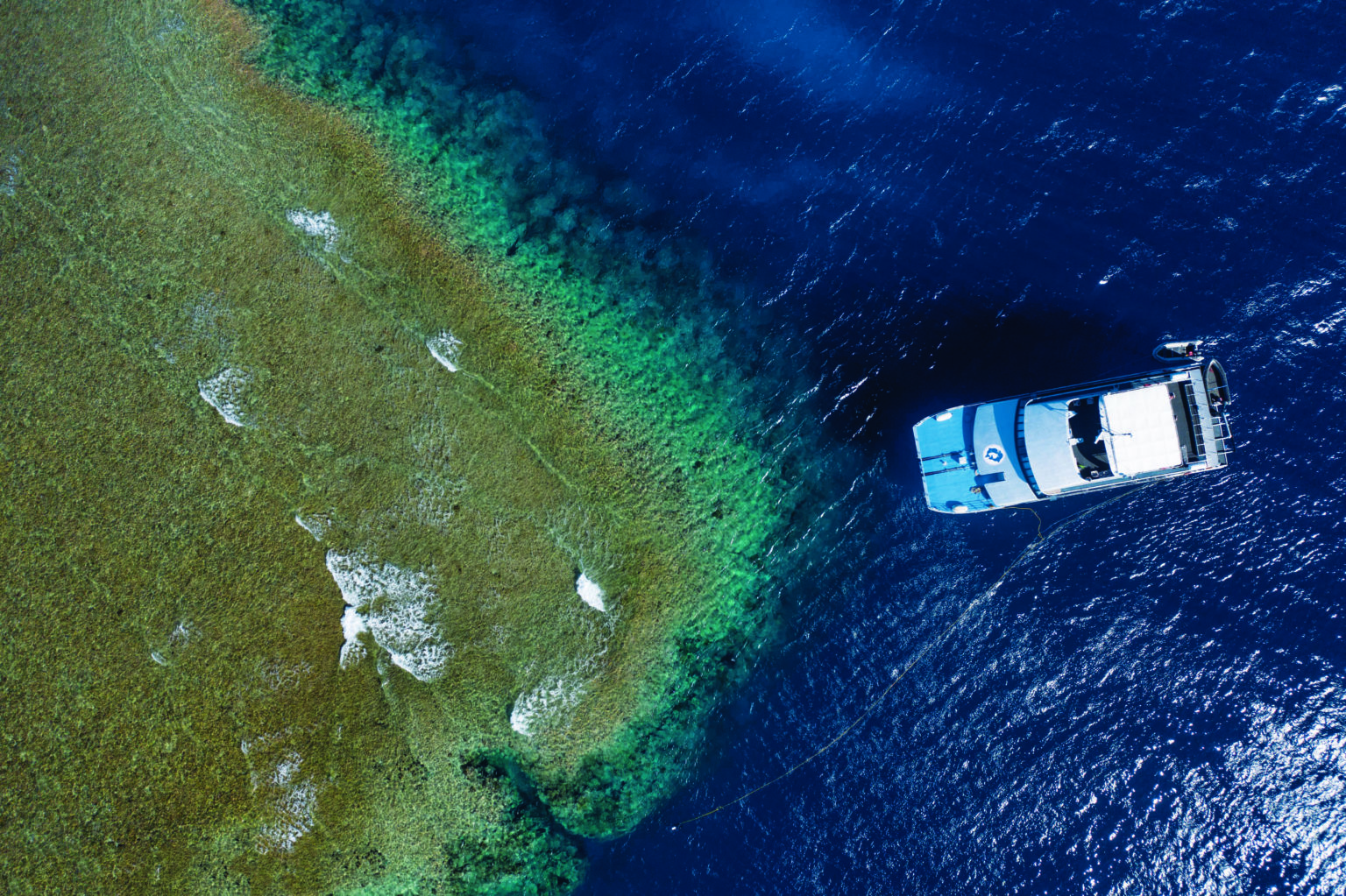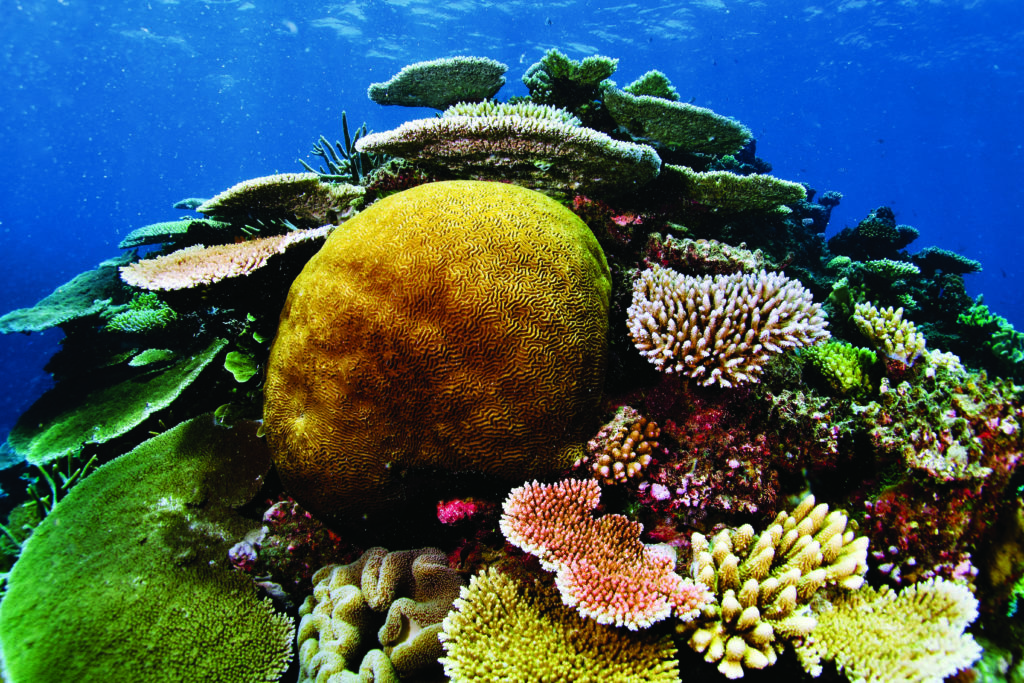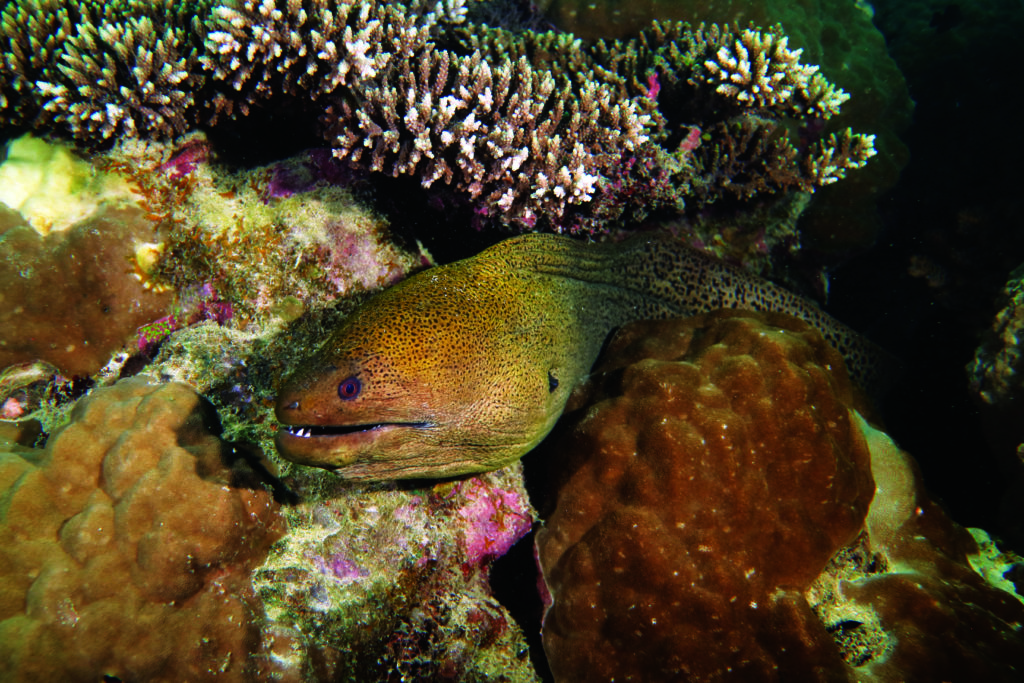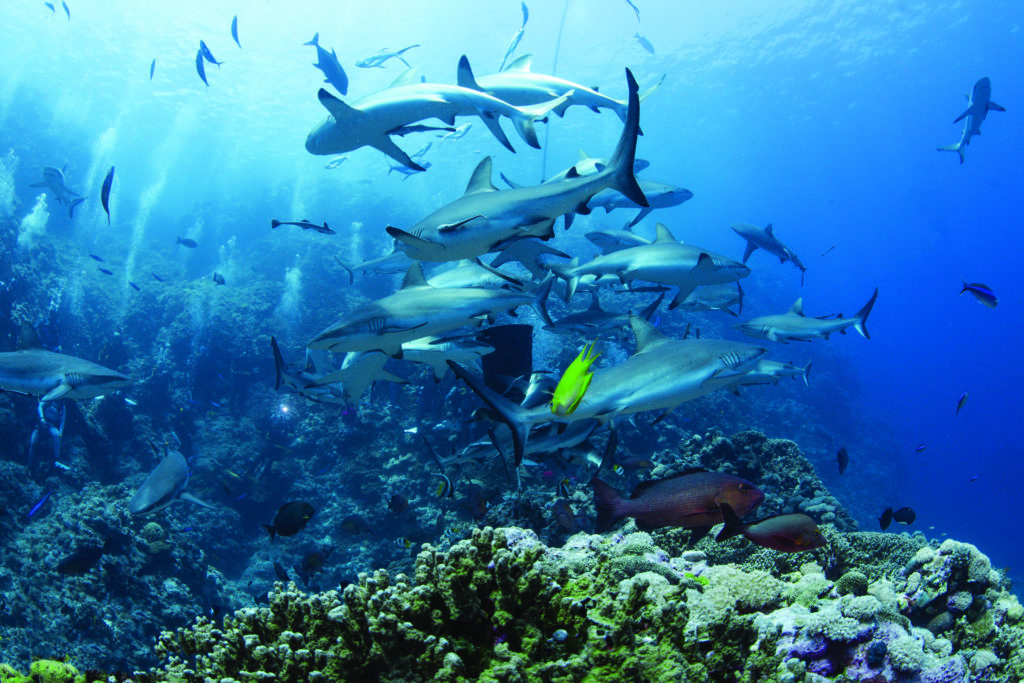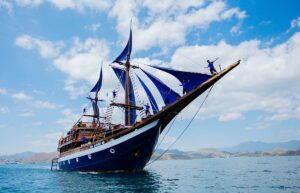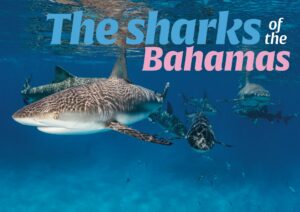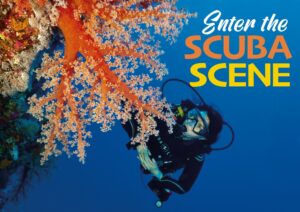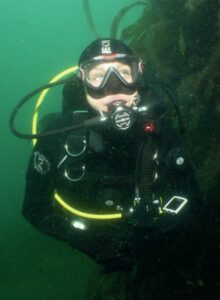Want to know the best spots to dive on the Great Barrier Reef? Deborah Dickson-Smith asked Master Reef Guides to choose their top 12 dives on this iconic dive location.
Queensland’s tropical north is the place many of us first discovered the Great Barrier Reef. From Cairns or Port Douglas, this is the closest jump-off point to the outer reef for a day trip or liveaboard expedition. From Norman and Saxon Reefs out from Cairns, to Agincourt Reef out of Port Douglas, and further north to the Ribbon Reefs and Coral Sea. There are literally hundreds of dive sites to choose from, so how do you choose?
We asked the experts, Master Reef Guides working in this region, which reefs offer the best diving, to put together a list of the Top 12 Dives on the Great Barrier Reef.
The Point. Agincourt Reef No. 3
- Master Reef Guide: Dr Glenn Burns (and Dive Instructor Haylie Bennett)
- Dive it with: Quicksilver and Silversonic
‘The Point’ is at the northern-most point of Agincourt 3, on a section of the Reef that sits on the very edge of the continental shelf around 21 miles offshore. It is separated from Agincourt 4 by a narrow channel. These two geographical features combine to create a spectacular site for lovers of pelagic action. Strong currents sweep plankton-rich waters from the surrounded deep sea into the channel attracting predators, with large schools of striped and yellow tail fusiliers patrolling the coral wall, and chasing them, larger predators such as big-eye trevally and barracuda.
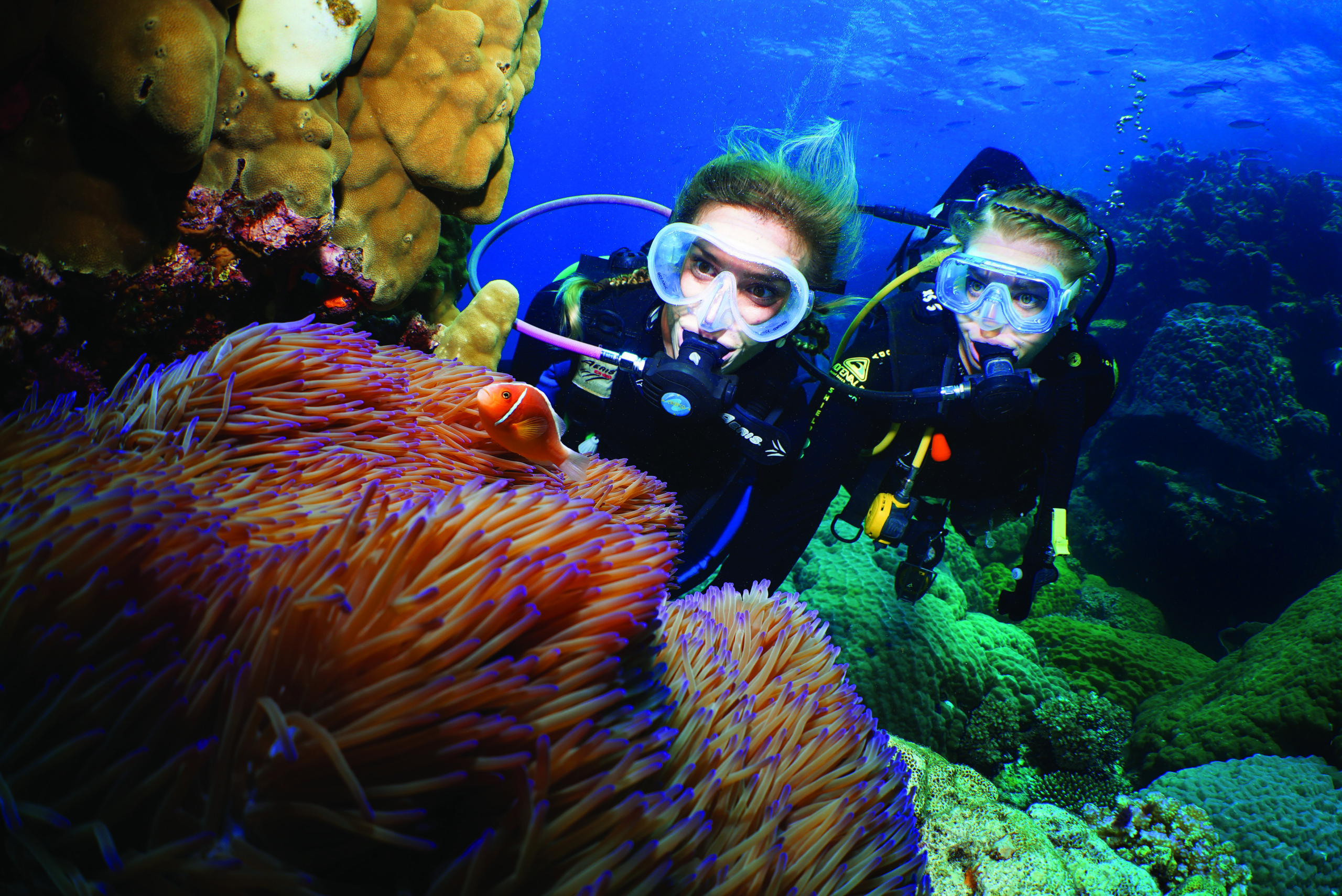
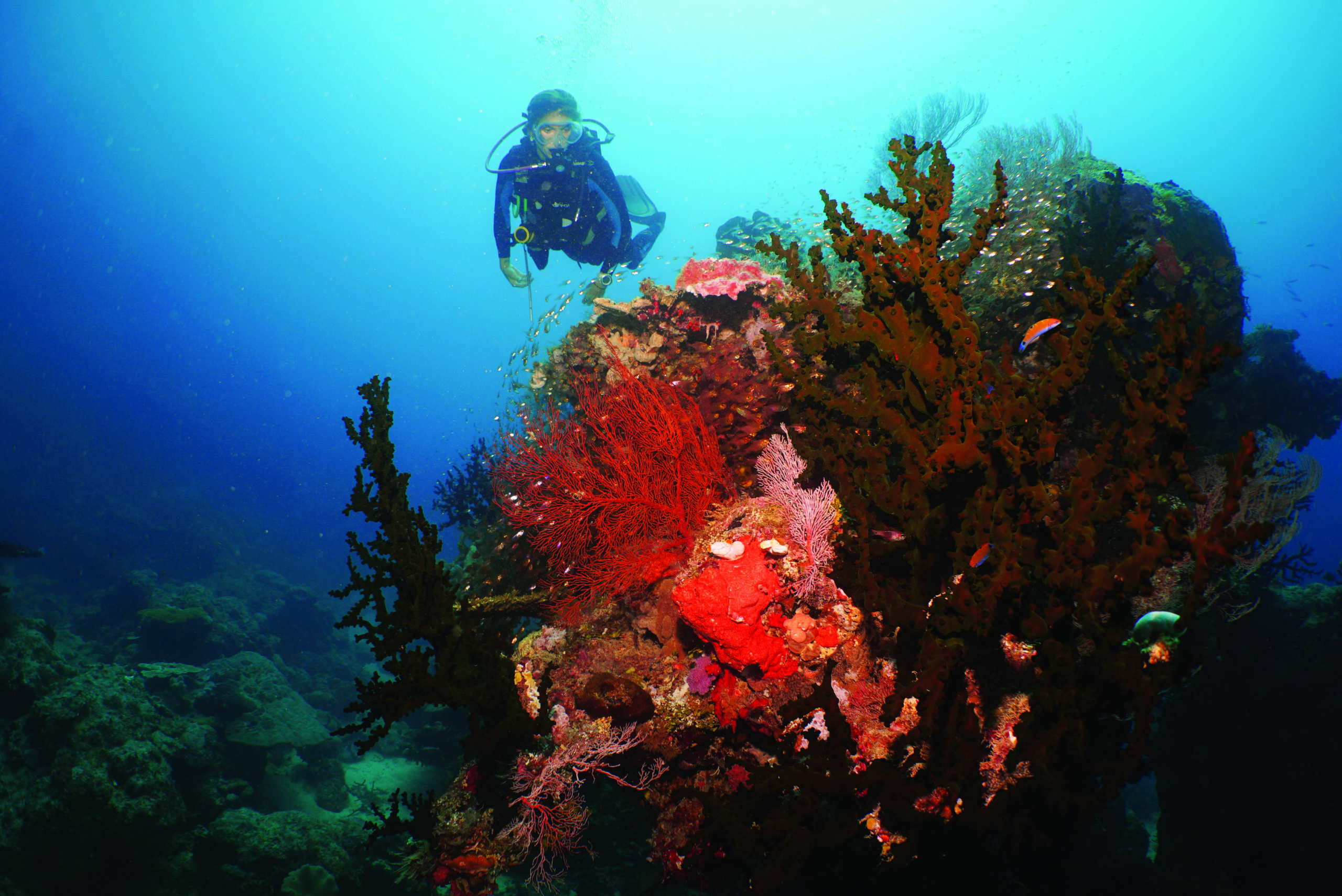
Outside the lagoon, divers frequently sight larger pelagics, including gray reef sharks and the occasional bull shark, while inside the lagoon, whitetip and blacktip reef sharks.
The best way to dive The Point is a drift dive, dropping in on the outer wall just outside the channel, drifting swiftly around the Point itself into the channel, passing forests of enormous gorgonian fans along the way before being sucked into the lagoon, where you’ll likely meet Donut, the world’s friendliest, giant Maori wrasse.
When conditions allow, you can also dive along the outer wall, where you can expect visibility between 100-150 feet as the reef wall drop down, in stages, 165ft, 330ft, 3,280ft.
Nursery Bommie. Agincourt Reef No. 3
- Master Reef Guide: Dr Glenn Burns (and Dive Instructor Haylie Bennett)
- Dive it with: Quicksilver and Silversonic,
Nursery is a relatively shallow dive, starting at 82ft depth at the base of the bommie itself which sits on a sloping reef wall. Drop in on the deeper side of the bommies and gradually circle your way to the shallows. The marine life changes as you ascend, passing reef sharks, large schools of drummer, the occasional reef shark and other pelagics in deeper water, and in the shallows, clouds of purple anthias. Divers often see pods of dolphins and in winter, minke whales are occasionally sighted.
As you follow the reef wall into shallower water, you’ll pass a huge garden of staghorn coral in shades of brown, purple, blue and green before ending your dive in ‘Fishbowl’, a bowl with a white sandy bottom, surrounded by staghorns, and brimming with pretty reef fish of all colors, including neon blue chromis, orange and purple anthias and damsels.
Dr Glenn Byrne explains: “One of the reasons I love this dive is that it’s so versatile, it has something for divers of all levels, from beginner to hardcore.”
Helm Deep Drift. Agincourt No. 2
- Master Reef Guide: Dr Glenn Burns (and Dive Instructor Haylie Bennett)
- Dive it with: Quicksilver and Silversonic
Helms Drift is channel between two Agincourt reefs, namely 2A and 2B, where strong currents carry you along the outer wall and suck you into the channel where you drift and an incredible pace until the current peters out inside the lagoon.
“On this drift dive, you fly,” according to Haylie.
And while you’re ‘flying’ you’ll pass turtles, gray reef sharks and barramundi cod, before you reach the gentler pace of the reef surrounding the mooring and the macro features to be found there, such as tiny pipe fish and nudibranchs. Near the mooring you may also come across a couple of cheeky residents, Agro, a camouflage cod and Colin, a Malabar cod.
Three Sisters, Milln Reef
- Master Reef Guides: Russell Hosp and Kirsty Whitman
- Dive it with: Passions of Paradise, Pro Dive Cairns
The Three Sisters are three enormous bommies that sit on the very edge of Milln Reef, where the current brings in large amounts of plankton, a food rich environment for schooling pelagics such as fusiliers, red bass, drummer, and larger marine life including turtles, reef sharks, several species of rays including large smooth rays and cowtail rays.
The Sisters’ position at the edge of the reef assures excellent visibility, upwards of 65 feet, perfect for shark and ray spotting!
Start at the third sister and swim a figure eight pattern around the second and third sister before heading to Sister No. 1. Reef fish you’re likely to see along the way include fusiliers, damsels, purple and orange anthias, bright blue chromis, yellow spotted and diagonal banded sweetlips and parrotfish.
Club 10, Milln Reef
- Master Reef Guides: Russell Hosp and Kirsty Whitman
- Dive it with: Passions of Paradise, Pro Dive Cairns
Good for snorkelers and divers, this shallow dive (so named for its deepest point: 10m, or 32ft), has vibrant coral cover and several species of anemones in one of the largest fields of anemones you’ll ever see. Just beneath the mooring there are large clusters of blue and brown staghorn corals, huge boulder corals, and on the sandy seafloor, garden eels sway in the mild current.
In the surrounding shallow coral gardens you’ll find a wide variety of reef life: damselfish, blue tangs (Dory), cuttlefish, butterflyfish, turtles and several species of sharks, including epaulette sharks, tawny nurse sharks and reef sharks.
Cairns: Twin Peaks, Saxon Reef
- Master Reef Guide: Michelle Barry
- Dive it with: Divers Den
Saxon Reef is one of the best Great Barrier Reef dive and snorkel sites. Set between Norman and Hastings Reefs, there are calm lagoons ideal for snorkeling – as well as the famous Twin Peaks coral ‘mountains’ where a deeper scuba dive offers the chance to spot species like reef sharks, trevally, large cod, and moray eels.
City Hall, Moore Reef
- Master Reef Guide: Pablo Cogollos
- Dive it with: Sunlover Reef Cruises
Located about 650 feet from the Sunlover Pontoon, City Hall is a large pinnacle, festooned at depth with giant gorgonian fans and healthy, vibrant and diverse coral cover in the shallows. It is surrounded by at least ten swim-throughs where you might find wide-eyed red cardinal fish, here and there clouds of glassfish and the odd coral trout darting in and out.
Turtles are almost guaranteed at this site, with 18 individual resident turtles identified: two hawksbill and 16 green sea turtles. As you circle and ascend the pinnacle, you’ll see lots of damsels fluttering about the thick outcrops of branching coral and huge schools of yellowtail fusiliers darting scaling the coral wall at high speed.
Marine World Wall, Moore Reef
- Master Reef Guide: Sam Gray
- Dive it with: Reef Magic
This section of Moore Reef is heart-warming comeback story, one that graced the cover of the Weekend Australian Magazine some 12 months ago. The ‘Wall’ is located on the far side of the reef where the ‘Marine World’ pontoon is moored. In 2011, this part of Moore Reef was hammered by Cyclone Yasi, so much so that in parts, it was virtually stripped bare of coral cover.
In late-2020, Reef Magic's GBR Biology team conducted Eye on the Reef Rapid Health Indicator Surveys, and were delighted to discover that coral cover was back to pre-Yasi levels. The reef now boasts 80 percent coral cover, with layers and layers of plating coral competing for space with branching corals and providing shelter for an increasing population of reef fish such as coral trout and lizard fish.
The Wall is horseshoe-shaped, which (under normal weather patterns) protects the coral cover from the elements, even though it faces open ocean. It is best dived as a drift dive, jumping in at ‘Pressure Point’ where you’ll likely see large schools of pelagic fish including drummer, rainbow runners, snub-nose dart fish and fusiliers. As you drift along, the coral cover changes from candy-colored soft corals to hard branching and bushy corals in the more protected areas.
Look out into the blue for the larger pelagics such as whitetip reef sharks, tawny nurse sharks, the occasional manta, and up close on the coral for nudibranchs, Ascidians and feather stars.
Top Tip: while Sunlover Reef Cruises and Reef Magic are known more as a specialist for non-divers with guided snorkel tours and glass bottom boats, they are also a great choice for certified divers as you will usually find yourself in a very small group.
Coral Gardens, Flynn Reef
- Master Reef Guide: Pablo Cogollos
- Dive it with: Passions of Paradise, Silverswift, Pro Dive Cairns
Flynn Reef has some of the best coral cover on the Great Barrier Reef, in fact Master Reef Guide Pablo Cogollos compares it to Lady Elliot Island for its coral density and diversity. Huge boulder corals fight for space with plate corals, branching and bushy corals, and this diversity attracts a diversity of fish life.
Exploring the gardens, you’ll come across coral trout, sweetlips, trumpetfish, several different angel fish, damsels, chromis and anemonefish.
North Horn, Osprey Reef
- Master Reef Guide: Pablo Cogollos and Michelle Barry
- Dive it with: Mike Ball Dive Expeditions, Spirit of Freedom
Known mainly as a shark feeding dive, the location of this site means you could expect plenty of pelagic (and shark) action regardless of whether they are fed. Located at the northern-most tip of Osprey Reef, food-rich currents from the surrounding deep water attract large pelagics such as gray reef sharks, whitetip and silvertip sharks, hammerheads and the occasional thresher shark. You’ll often see large smooth rays dosing on the sandy sea floor and manta rays gliding past in the blue – even whalesharks have been sighted here.
The shark spectacular itself happens at the tip of the reef, with divers seated around natural coral amphitheatre while the sharks are lured in for a thrill (and a photo opportunity) with a bucket of chum. And it’s not just sharks that are attracted, with large numbers of trevally, cod and other smaller fish circling the sharks like a tornado, keen to sweep up the scraps.
Once the sharks have had their feed, drift along the Western Wall, which is festooned with vibrant soft corals and forests of gorgonian fans while clouds of purple anthias add to the whole rainbow of colors.
Soft Coral Wall, Osprey Reef
- Master Reef Guide: Michelle Barry
- Dive it with: Spirit of Freedom, Mike Ball Dive Expeditions
This drift dive runs along the outer edge of Osprey Reef, dropping down to unimaginable depths. Normally a tender will drop you at the start of the drift where you descend to about 100-130ft. Drift along past huge gorgonian fans and soft corals of all sorts, and in all sorts of candy colors – yellow, pink, orange, blue, red… populated by clouds of reef fish.
About halfway along the drift, wall becomes inverted, transforming into an overhang, while everything below you falls away and you find yourself in a candy-colored hanging garden. The inversion adds drama to this beautiful underwater landscape, the kaleidoscope of colors further enhanced by all colorful reef fish including fusiliers, chromis and damsels.
Be sure to look out into the blue for sailfish, hammerheads, dogtooth tuna, eagle rays and big schools of big-eye jacks, barracuda and herds of bumphead parrotfish. The drift ends with a finale of sharks at North Horn, where even the odd whaleshark has been sighted.
Crystal Plateau, Bougainville Reef
- Master Reef Guide: Pablo Cogollos
- Dive it with: Mike Ball Dive Expeditions
Bougainville Reef is on the ‘Fair Weather’ Coral Sea itinerary for Cairns’ based liveaboards, being one of the more-remote reef systems in the Coral Sea. The reef here is one of the healthiest in the Coral Sea, and even in the shallows you can expect to see large schools of drummer, trevally, barracuda and bumphead parrotfish.
There is a fantastic drift dive here between the western reef wall and a row of five or six pinnacles where you’ll drift by large schools of fish before reaching the end of the slipstream to be greeted by the friendliest (yet to be named) potato cod.
Two Towers, Ribbon Reef 10
- Master Reef Guide: Michelle Barry, Pablo Cogollos
- Dive it with: Spirit of Freedom, Mike Ball Dive Expeditions
Two Towers is located on the northern tip of the Ribbon Reefs, and there are several reasons it is one of Michelle Barry’s favourites.
She said: “The coral cover at Two Towers is beautiful and it is also a minke whale hotspot, but the main reason I love this reef is because it’s a comeback story that gives us hope for the Reef.”
In 2013 and 2014, this reef was hammered by two cyclones and a devastating crown of thorns seastar outbreak. The reef was so badly damaged there was hardly any coral cover left at all. When Two Towers was surveyed in the 2020 Great Reef Census, Michelle and a team of marine scientists which included Dr David Wachenfeldt, head of research at the Great Barrier Reef Marine Park Authority (GRBMPA), where overjoyed to find a reef in considerable recovery.
In just six years, the coral cover on the shallower parts of this once dead reef is dense and diverse. There is a higher density of fast-growing branching and plating corals, bringing with them all the fish species that love the fast growers, such fusiliers, chromis, damsels, blue line snapper, turtles and black anemonefish. These corals on the top levels of the reef are now beginning to spill over into deeper water, replenishing coral density at depth.
Another reason to love Twin Towers is that its unique topography forms a perfect nursery for brooding dwarf minke whales. Between this long section of reef and the mainland, there are no large reefs or bommies, just a wide open paddock with a sandy sea floor, protected from the open ocean by Ribbon Reef 10 – the perfect nursery for dwarf minke mums to rest with their calves before the long trip south.
The reef here is one of the healthiest in the Coral Sea, and even in the shallows you can expect to see large schools of drummer, trevally, barracuda and bumphead parrotfish
Another reason to love Twin Towers is that its unique topography forms a perfect nursery for brooding dwarf minke whales
These corals on the top levels of the reef are now beginning to spill over into deeper water, replenishing coral density at depth
Photography by Michelle Barry, Lily Buchanan, Andrew Watson and Deborah Dickson-Smith
